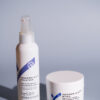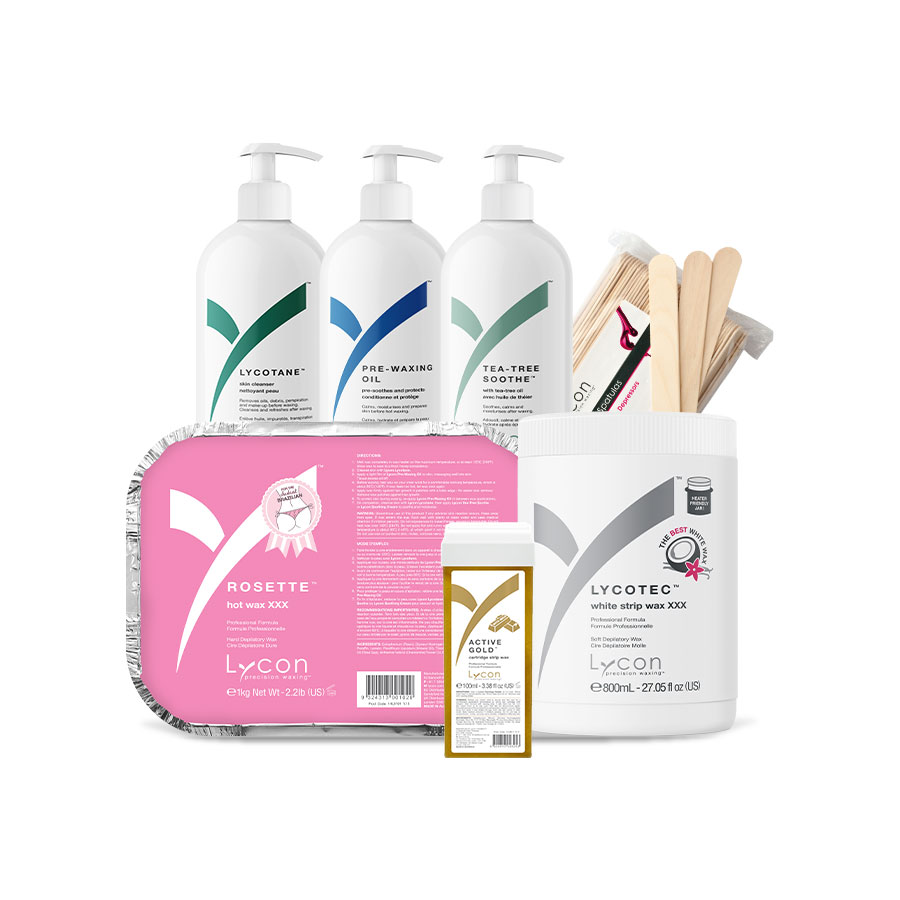
Waxing dates back to the ancient Egyptians, who removed unwanted body hair by formulating a wax made with beeswax. Although beeswax is still an important part of quality depilatory waxes, a quality wax relies on more than just beeswax to be suitable and effective in removing hair. Today, premium waxes are typically made from beeswax, quality resins, and aromatherapy oils. With a quality waxing experience, spa and salon clients will be the professional’s advocates and the demand for waxing services will grow, thus creating a steady revenue stream.
1. Hair removal waxes fall into two categories: hard and soft wax.
Soft wax, also known as strip wax, is applied thinly to the skin and then removed using a fabric waxing strip. Hard wax, or hot wax, is applied thickly, allowed to set, and then removed on its own. Hard wax is often also referred to as stripless wax. Hard waxes are best for the face, eyebrows, lip area, nose, underarms, and the bikini area, while soft waxes are best for larger areas, such as the legs, arms, chest, and back.
2.In 1987, the Padilha sisters – from Brazil – opened a salon in the heart of Manhattan that grew to popularize the Brazilian wax in the United States.
The sisters have stated that waxing is a part of their culture because bikinis are often extremely small in Brazil. The service later exploded in popularity and is still one of the most popular waxing services provided.
3. According to a 2014 Gallup study of men’s grooming appliances and tools, 39 percent of all men manscape with the majority being in their 20s and 30s.
The most common area for hair removal in men is the groin, followed by the chest and underarms; underarms have emerged as the newest trend in male hair removal services. When adding male waxing services to the spa menu, it is important to invest in proper staff training and a wax formulated especially for men’s strong hair growth and sensitive skin.
4. Ensure that the client is familiar with the various waxing services available.
For example, explain the difference between a Hollywood and a Brazilian wax. This explanation time can also be used to upsell services.
5. Premium waxes can remove stubborn hairs as short as one millimeter.
In general, hair growth should be 1 /4 inch for body hair and 1/8 inch for eyebrows. Hard wax will grip the hairs more effectively than soft wax and is best for sensitive areas. Utilizing a premium wax will allow professionals to get short, stubborn hairs more easily and provide a smooth waxing experience for the client.
6. To achieve the best results with waxing, it is extremely important to use appropriate pre- and post-waxing lotions.
One dependable waxing method is to use a light skin cleanser that is particularly designed for waxing before treatment to remove perspiration, pollution, and cream residue. If a hard wax is being used, follow the cleansing with a light application of a pre-waxing oil, which will pre-soothe the skin and form a protective barrier so that the wax does not stick to the skin. After waxing, use the skin cleanser to close the hair follicle and follow with a hydrating lotion or an ingrown hair treatment.
7. Double dipping occurs when the same waxing spatula is repeatedly put back into the wax pot during a treatment.
Professionals should absolutely refrain from double dipping because it introduces bacteria into the pot, increasing the risk of infection to the client. The temperature of the wax pot is not hot enough to kill all of the bacteria. Therefore, a brand new spatula should be used for each application of wax to the skin.
8. It is important to educate clients on how to take care of their skin in between waxing treatments.
It is also important to recommend that they regularly exfoliate and moisturize because it will help reduce the risk of ingrown hairs and breakouts. Furthermore, advise clients to avoid sun exposure for at least 24 hours before and after waxing. Professionals should recommend and promote homecare products not only because they are qualified to do so, but also because it is a great way to increase sales.
9. Waxing is a high-profit treatment because it has low overhead.
Compared to facial services, waxing can bring in more dollars in less time. It can also provide steady revenue, as clients often perceive waxing as a necessity service, rather than a luxury. Using a high-quality wax will enable the spa to provide a more pleasant waxing experience for their clients and sales.
10. Have the client complete a questionnaire prior to their service in order to better understand any potential health concerns, such as allergies or skin sensitivities.
Although very rare, clients can have adverse reactions to the wax.






